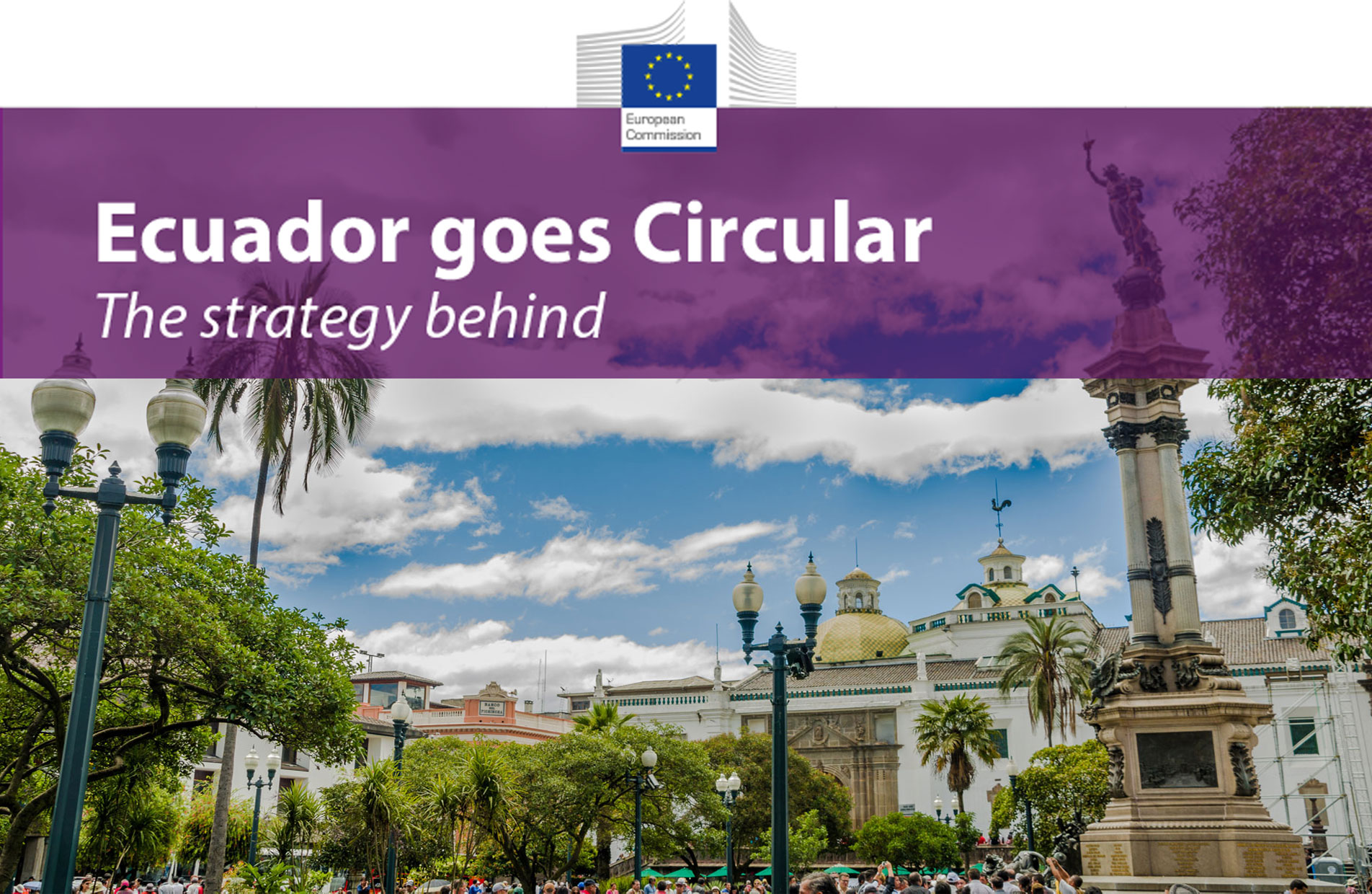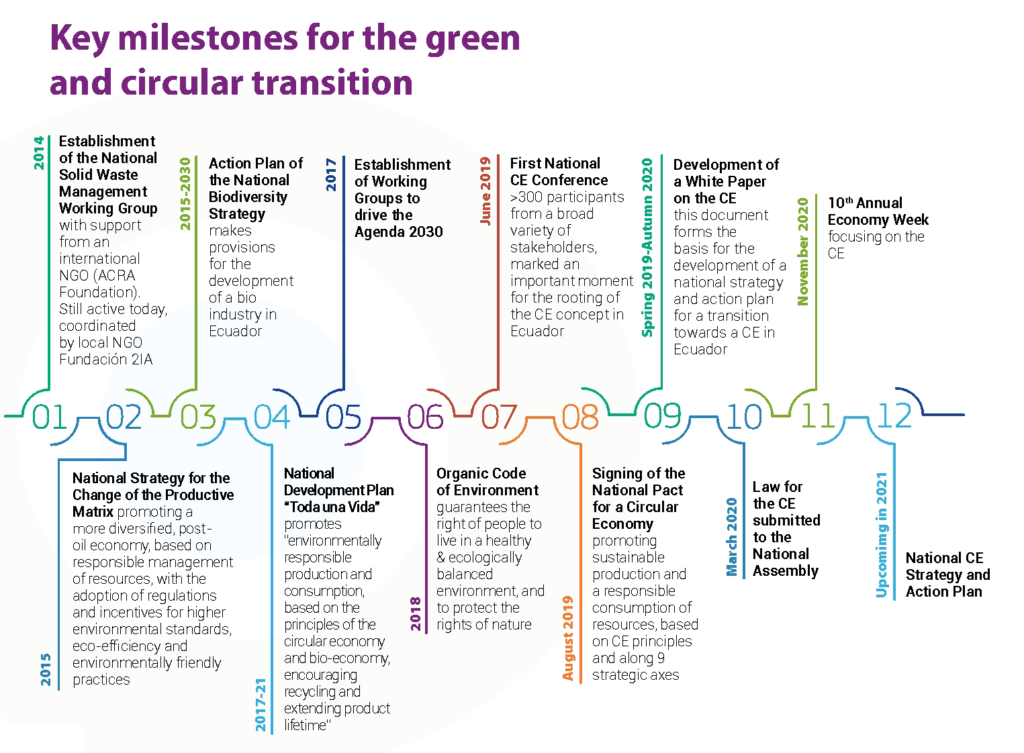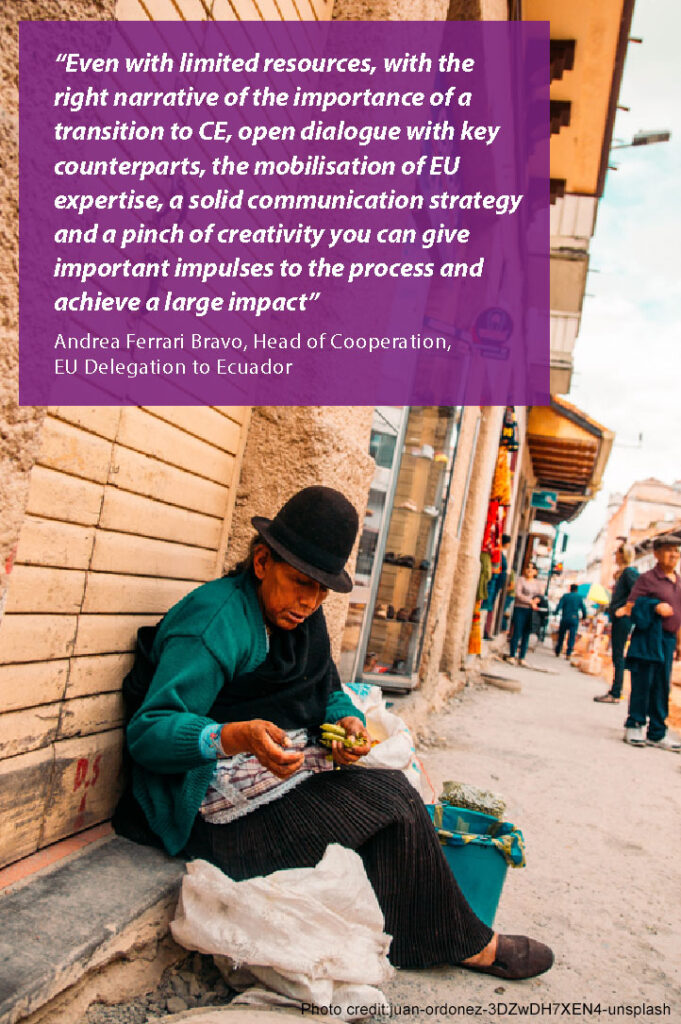Important foundations for a circular policy framework were laid down between 2014 and 2018, as circular economy related concepts were integrated in key national legislation. Ecuador’s turn towards a circular economy future is manifested in strategic policy initiatives like the National Strategy and Action Plan for the Circular Economy Transition (due mid 2021), the Law for the Circular Economy (under approval by the National Assembly), and the endorsed National Development Plan 2017- 2021 (“Toda una Vida”) which embraces principles of the circular- and the bio- economy, encouraging recycling and extending product lifetime. Ongoing policy processes include the Law for Extended Producer responsibility, a specific normative for electronic waste (expected to be adopted in 2021), and updates to the legislation on nonrecyclable plastics.
Ecuador is a country of great natural riches and a growing economy, facing the challenges that come with the intensification of industrial activity and changing consumption patterns. For instance, only 6% of the produced waste is recycled nationwide (National Institute of Statistics and Census, 2018). Despite a number of initiatives aiming at improving resource extraction and use, sustainable consumption, reuse of waste materials to manufacture new products, and energy efficiency over the last decade, the concept of circular economy (CE), as such, has until recently been very rarely known in the country.



